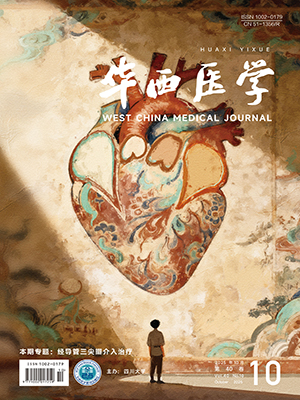| 1. |
Chow LQM. Head and neck cancer. N Engl J Med, 2020, 382(1): 60-72.
|
| 2. |
Johnson DE, Burtness B, Leemans CR, et al. Head and neck squamous cell carcinoma. Nat Rev Dis Primers, 2020, 6(1): 92.
|
| 3. |
张少秋, 燕丽, 李瑞辰, 等. 头颈部鳞状细胞癌免疫微环境及其作用机制的最新研究进展及展望. 中国癌症杂志, 2023, 33(6): 629-636.
|
| 4. |
Sadetzki S, Chetrit A, Freedman L, et al. Long-term follow-up for brain tumor development after childhood exposure to ionizing radiation for tinea capitis. Radiat Res, 2005, 163(4): 424-432.
|
| 5. |
Richardson DB, Leuraud K, Laurier D, et al. Cancer mortality after low dose exposure to ionising radiation in workers in France, the United Kingdom, and the United States (INWORKS): cohort study. BMJ, 2023, 382: e074520.
|
| 6. |
Liu Y, Liu Z, Chen J, et al. Personal history of irradiation and risk of breast cancer: a Mendelian randomisation study. J Glob Health, 2024, 14: 04106.
|
| 7. |
卢存存, 陈子佳, 王志飞. 基于真实世界数据的观察性因果推断研究新框架(目标试验模拟)及其在中医药领域中的应用展望. 协和医学杂志, 2024, 15(2): 422-428.
|
| 8. |
Levin MG, Burgess S. Mendelian randomization as a tool for cardiovascular research: a review. JAMA Cardiol, 2024, 9(1): 79-89.
|
| 9. |
Burgess S, Woolf B, Mason AM, et al. Addressing the credibility crisis in Mendelian randomization. BMC Med, 2024, 22(1): 374.
|
| 10. |
Lu C, Ke L, Mentis AA, et al. Tea intake and non-alcoholic fatty liver disease risk: a two-sample Mendelian randomization study. Metabol Open, 2024, 24: 100322.
|
| 11. |
尚文茹, 魏莉莉, 卢存存. 受教育程度对系统性红斑狼疮的因果效应: 孟德尔随机化研究. 华西医学, 2023, 38(12): 1880-1884.
|
| 12. |
高雪, 王慧, 王彤. 孟德尔随机化中多效性偏倚校正方法简介. 中华流行病学杂志, 2019, 40(3): 360-365.
|
| 13. |
Gormley M, Creaney G, Schache A, et al. Reviewing the epidemiology of head and neck cancer: definitions, trends and risk factors. Br Dent J, 2022, 233(9): 780-786.
|
| 14. |
Sung H, Ferlay J, Siegel RL, et al. Global cancer statistics 2020: GLOBOCAN estimates of incidence and mortality worldwide for 36 cancers in 185 countries. CA Cancer J Clin, 2021, 71(3): 209-249.
|
| 15. |
Xie J, Huang H, Liu Z, et al. The associations between modifiable risk factors and nonalcoholic fatty liver disease: a comprehensive Mendelian randomization study. Hepatology, 2023, 77(3): 949-964.
|
| 16. |
Falcioni L, Bua L, Tibaldi E, et al. Report of final results regarding brain and heart tumors in Sprague-Dawley rats exposed from prenatal life until natural death to mobile phone radiofrequency field representative of a 1.8 GHz GSM base station environmental emission. Environ Res, 2018, 165: 496-503.
|
| 17. |
Hong JY, Han K, Jung JH, et al. Association of exposure to diagnostic low-dose ionizing radiation with risk of cancer among youths in South Korea. JAMA Netw Open, 2019, 2(9): e1910584.
|
| 18. |
Withrow DR, Anderson H, Armstrong GT, et al. Pooled analysis of meningioma risk following treatment for childhood cancer. JAMA Oncol, 2022, 8(12): 1756-1764.
|
| 19. |
Yuan Y, Sun P, Xiao H, et al. Risk of second primary thyroid cancer in cancer survivors. Sci Rep, 2024, 14(1): 12478.
|




